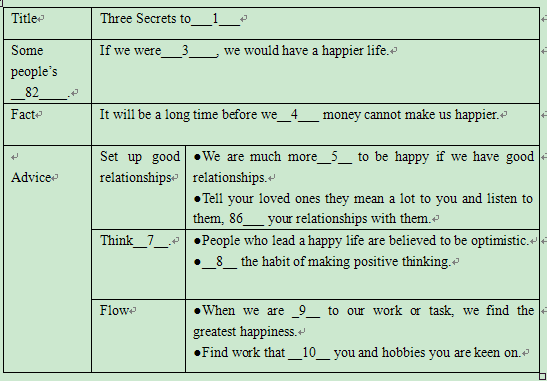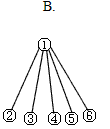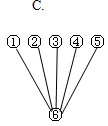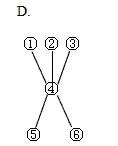We all know that money can't make us happy, but many times we act as if we'd be
happier with a bit more money. We are conditioned to want to be richer; we are trained
to want the latest style that television tells us; we want to earn more money because then
we'll have a good life.
But none of that will make us happier. And the sad thing is that it can take us decades
of pursuing (追求) wealth and expensiv

e things before we realize that. So what will bring
us happiness? Luckily, there are three things that don't cost anything. Here they are:
Good relationships. We have a human need to be close with other human beings. Having
good, supportive friendships, a strong marriage or loving relationships with our family members
will make us much more likely to be happy. Therefore, take time, today, to stay with your
loved ones, to tell them what they mean to you, to listen to them, and to develop your r
elationships with them.
Positive thinking. Optimism(樂觀) is one of the best indicators of people who lead a
happy life. Happy people feel empowered, in control of their lives. So why not make
positive thinking a habit? In fact, this should be one of the first habits you develop.
Flow. This is a popular concept on the Internet these days 一 the state we enter when
we are completely focused on the work or task. Having work and leisure(休閑)that gets
you in this state of flow will almost undoubtedly lead to happiness. People find the greatest
enjoyment not when they're passively mindless, but when they're absorbed in a mindful
challenge.
If you are interested in some kind of work and keen on some kind of hobbies, it is not a
bad idea. Turn off the TV 一 this is the opposite of flow 一 and then go outside and do
something that truly makes you active.






 閱讀快車系列答案
閱讀快車系列答案 e things before we realize that. So what will bring
e things before we realize that. So what will bring 